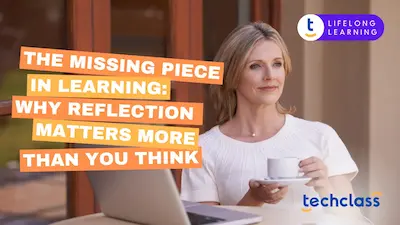
In today’s rapidly evolving world, success no longer hinges solely on what you know. It increasingly depends on your ability to let go, to unlearn what no longer serves you and make room for new, more relevant knowledge and behaviors. The art of unlearning is as vital as learning itself. It’s a deliberate process of releasing outdated beliefs, habits, and information to foster growth, creativity, and adaptability in both personal and professional life.
Unlearning is the intentional act of discarding obsolete knowledge, beliefs, or behaviors that limit your ability to adapt and evolve. It’s not about erasing the past but updating your internal framework to better align with present and future demands.
Imagine trying to navigate with an old map of a city that has changed dramatically. Just as you’d need a new map, you must also revise your mental models to remain effective in a fast-changing world. As futurist Alvin Toffler put it, "The illiterate of the 21st century will not be those who cannot read and write, but those who cannot learn, unlearn, and relearn."
Old knowledge can weigh us down. In the workplace, sticking to outdated methods can impede innovation. In education, rigid memorization without understanding can stifle curiosity. In our personal lives, ingrained habits may prevent us from embracing healthier or more productive behaviors.
We carry cognitive biases, confirmation bias, anchoring bias, belief perseverance, that make us cling to what we already “know,” even when it's no longer helpful. These biases act as mental barricades, making it harder to adopt new perspectives.
The ability to unlearn is becoming a cornerstone of 21st-century literacy. Why?
Traditional education often prizes memorization over mastery, rewarding students for recalling facts rather than questioning them. But unlearning flips that model. It encourages students to reflect on their learning, identify outdated or false information, and explore alternatives.
Educators who integrate unlearning into curricula through project-based learning, open discussion, and reflective journaling help learners become critical thinkers and adaptive problem-solvers. In this environment, mistakes are welcomed as learning opportunities, and curiosity is prioritized over correctness.
Innovation rarely comes from clinging to old ways of thinking. Unlearning is essential for:
In the workplace, unlearning is no longer optional, it’s strategic. Professionals must constantly update not just their skills but the mental models they rely on.
Examples include:
While unlearning is difficult, it is learnable. Here are proven techniques to help you build the muscle of unlearning:
Reflect regularly. Identify beliefs or habits that no longer align with your goals. Journaling or meditating can help uncover hidden assumptions.
Use critical thinking to ask: “Is this still true?” or “What if the opposite were possible?” The Socratic method is a powerful tool for dismantling old ideas.
A curious mind is less resistant to change. Explore topics beyond your field, talk to people with different viewpoints, and stay open to being wrong.
Others often spot our blind spots before we do. Accept constructive criticism as a chance to revise your thinking, not as an attack on your intelligence.
Consult your “future self.” What would someone 20 years from now think of your current approach? Would they see it as progressive or outdated?
Expose yourself to differing perspectives. Join discussions, attend workshops, or simply listen more than you speak. Diversity of thought is a catalyst for unlearning.
Mind maps and flowcharts help you visualize connections between old and new knowledge. They make it easier to identify what needs to be retired.
View intelligence and capability as flexible. This mindset reduces fear of change and fosters openness to revising old ideas.
Try new methods. Fail. Reflect. Try again. Innovation thrives on cycles of trial and adjustment, not on stubbornness.
In teams or organizations, conduct after-action reviews, embrace feedback loops, and celebrate when old processes are replaced with better ones.
Unlearning is not a sign of ignorance. It’s a declaration of courage. It takes humility to admit that what once worked may no longer apply, and strength to change course.
Letting go doesn’t mean losing your identity. It means updating your operating system to match the reality you live in today. The art of unlearning is more than a skill, it’s a mindset. In an age of constant flux, those who cling to the past fall behind. Those who embrace unlearning, however, stay nimble, resilient, and ready for whatever comes next.
So, ask yourself: What outdated belief or habit are you still holding on to? What might happen if you let it go?
.webp)

